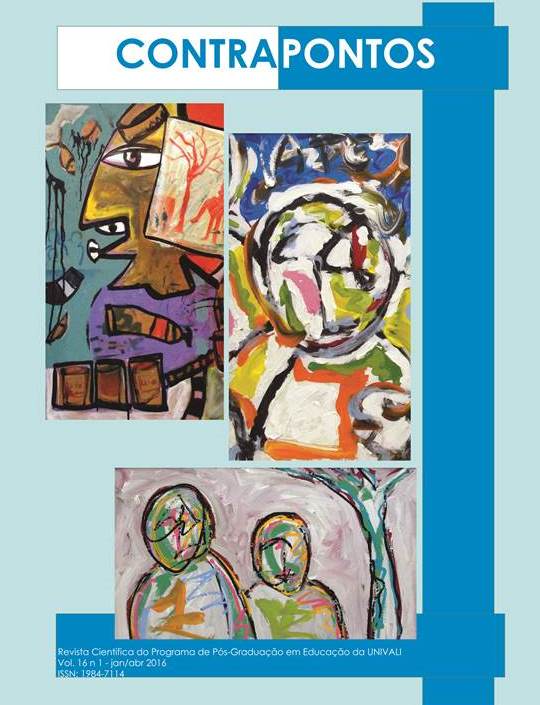SPECTATOR AND COMMON LINK: INVENTION AND TRANSFORMATIONS
DOI:
https://doi.org/10.14210/contrapontos.v16n1.p02-21Keywords:
Esthetic Formation, Fruition, Pleasure, Esthetics.Abstract
The invention of the spectator and the esthetic theme in the XVIII century was, at the same time, a condition and a consequence of the rooting of sentiment in the universal community. The birth of the public space, partly as a result of the circulation and confrontation of judgments in the sphere of exposure and the discourses related to them, is the source of contemporary theories of the criticism of founding art, in accordance with the work of Jürgen Habermas, the esthetic evaluation of the inter-understanding and intersubjectivity of receptions. This article reflects on the premises and political implications of art criticism and the esthetic experience; a reflection that needs to discuss the concepts, today ambivalent, of the spectator, common sense, communication, and publicity.
Downloads
Published
Issue
Section
License
Upon acceptance of an article, the author gives full rights of the work to Contrapontos., but retains the authorship. The published work is considered collaboration. Thus, its author will not get paid nor will s/he be charged by Contrapontos. The responsibility of the article solely goes to the authors. Citations and transcriptions are allowed by mentioning the sources.
Â

This work is licensed under a Creative Commons Attribution 4.0 International License.

